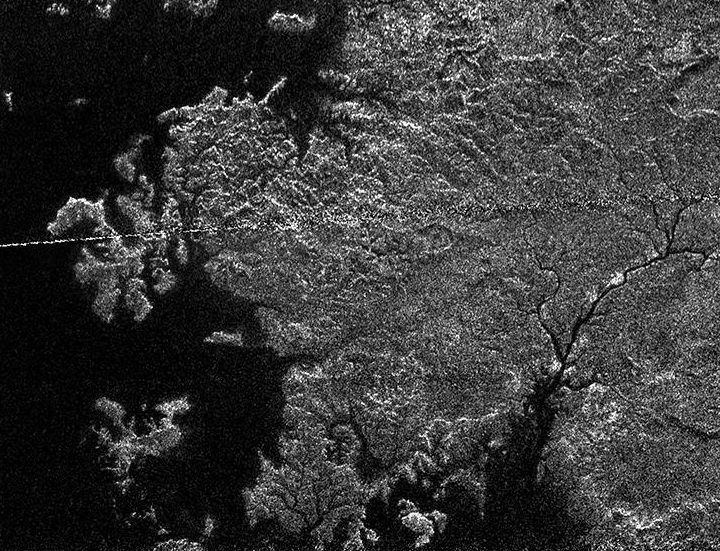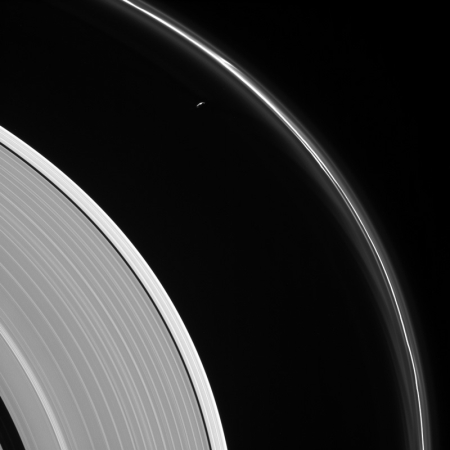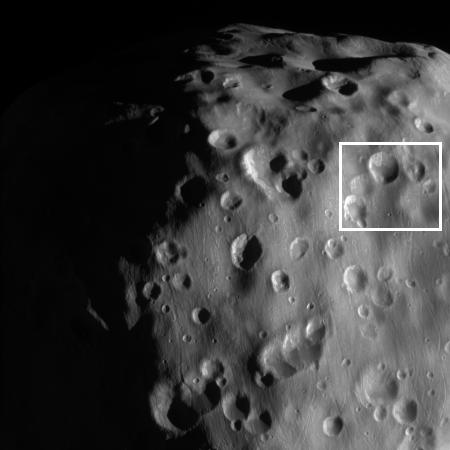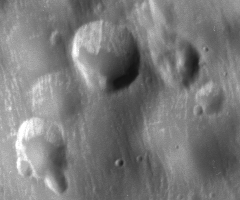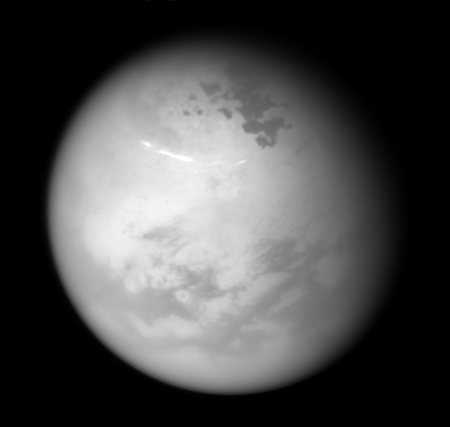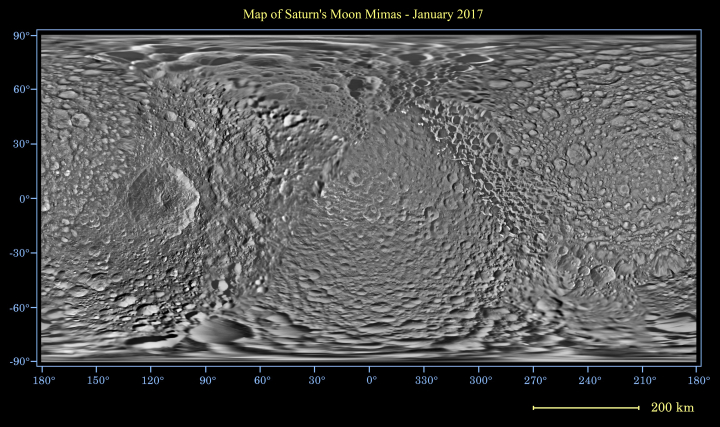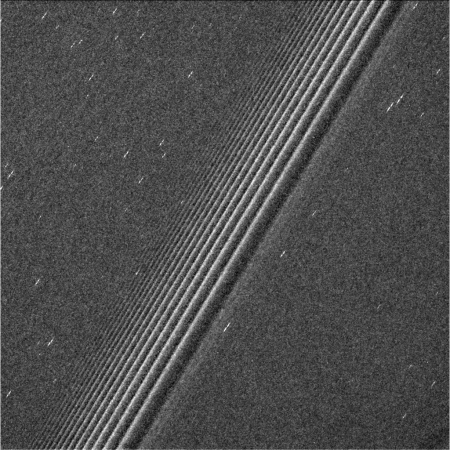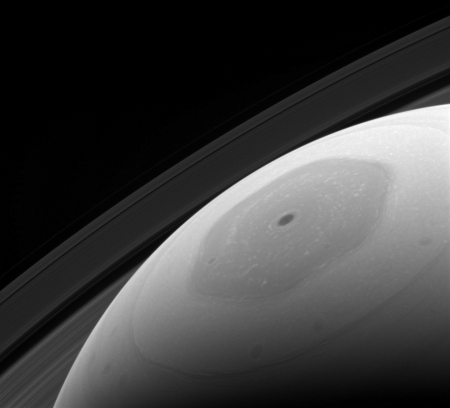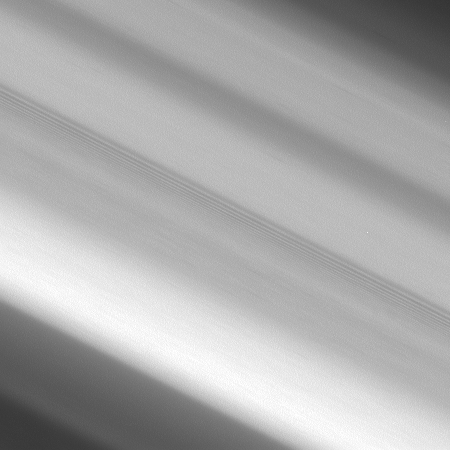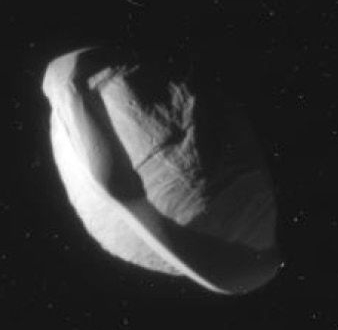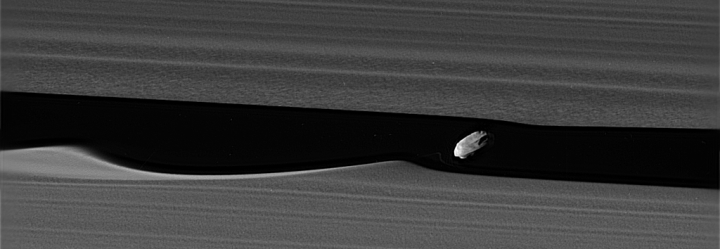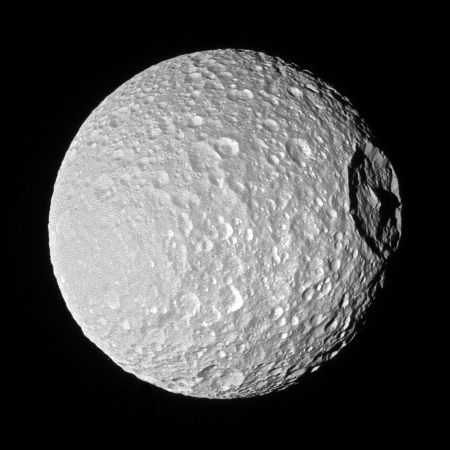Cassini movie flying past Saturn’s rings

Cool image time! The Cassini science team has assembled a short movie from 21 images taken by the spacecraft during its August 20th dive between the rings and Saturn. That animation is to the right.
Only two weeks remain in the Cassini mission. The spacecraft dives into Saturn on September 15.
The spacecraft is expected to lose radio contact with Earth within about one to two minutes after beginning its descent into Saturn’s upper atmosphere. But on the way down, before contact is lost, eight of Cassini’s 12 science instruments will be operating. In particular, the spacecraft‘s ion and neutral mass spectrometer (INMS), which will be directly sampling the atmosphere’s composition, potentially returning insights into the giant planet’s formation and evolution. On the day before the plunge, other Cassini instruments will make detailed, high-resolution observations of Saturn’s auroras, temperature, and the vortices at the planet’s poles. Cassini’s imaging camera will be off during this final descent, having taken a last look at the Saturn system the previous day (Sept. 14).
The second link above gives a detailed moment-by-moment breakdown of the final six days.
I would have posted this earlier this week, but my limited internet access made it impossible. Sorry about that.

Cool image time! The Cassini science team has assembled a short movie from 21 images taken by the spacecraft during its August 20th dive between the rings and Saturn. That animation is to the right.
Only two weeks remain in the Cassini mission. The spacecraft dives into Saturn on September 15.
The spacecraft is expected to lose radio contact with Earth within about one to two minutes after beginning its descent into Saturn’s upper atmosphere. But on the way down, before contact is lost, eight of Cassini’s 12 science instruments will be operating. In particular, the spacecraft‘s ion and neutral mass spectrometer (INMS), which will be directly sampling the atmosphere’s composition, potentially returning insights into the giant planet’s formation and evolution. On the day before the plunge, other Cassini instruments will make detailed, high-resolution observations of Saturn’s auroras, temperature, and the vortices at the planet’s poles. Cassini’s imaging camera will be off during this final descent, having taken a last look at the Saturn system the previous day (Sept. 14).
The second link above gives a detailed moment-by-moment breakdown of the final six days.
I would have posted this earlier this week, but my limited internet access made it impossible. Sorry about that.


